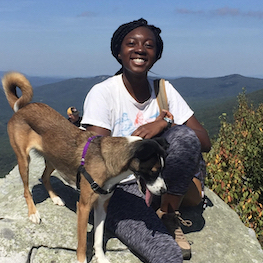My previous post concerned an apparently beneficial genetic variant, common in modern humans, that some researchers suspect we picked up via sex with Neanderthals. Attempts to find direct evidence that Neanderthals carried the variant have so far been unsuccessful. But other cases of beneficial variants acquired via hybiridization do exist. This is, for example, how the gray wolves of Yellowstone got their black pelts.

Note the variation among these members of Yellowstone’s Druid Pack, shown here in hot pursuit of an elk. The black pelts of two of the wolves are caused by a dominant allele of the K locus. This locus encodes a protein that binds to the melanocortin 1 receptor, which regulates the production of various forms of the pigment melanin. The dominant allele, which harbors a 3-base-pair deletion, also causes black coat color in dogs.
Last year, Tovi Anderson and colleagues published an analysis of the variation among chromosomes that carry the dominant allele in both species. Wolf chromosomes carrying the allele share a considerably younger most recent common ancestor than do dog chromosomes carrying the allele. This is evidence that the allele first arose by mutation in a dog, and later slipped into the wolf population when a black dog took a walk on the wild side.
Despite the fact that the black allele entered the Wolf gene pool only recently, it has risen to a frequency of nearly 20% among North American gray wolves living in forests. The allele has spread rapidly enough to suggest that it confers benefits on the wolves that carry it. As yet, no one knows why.
Sources:
Anderson, T. M., B. M. vonHoldt et al. 2009. Molecular and evolutionary history of melanism in North American gray wolves. Science 323: 1339–1343.
The photo is by Doug Smith. It can be downloaded from the web site of the National Park Service, and is in the public domain.







